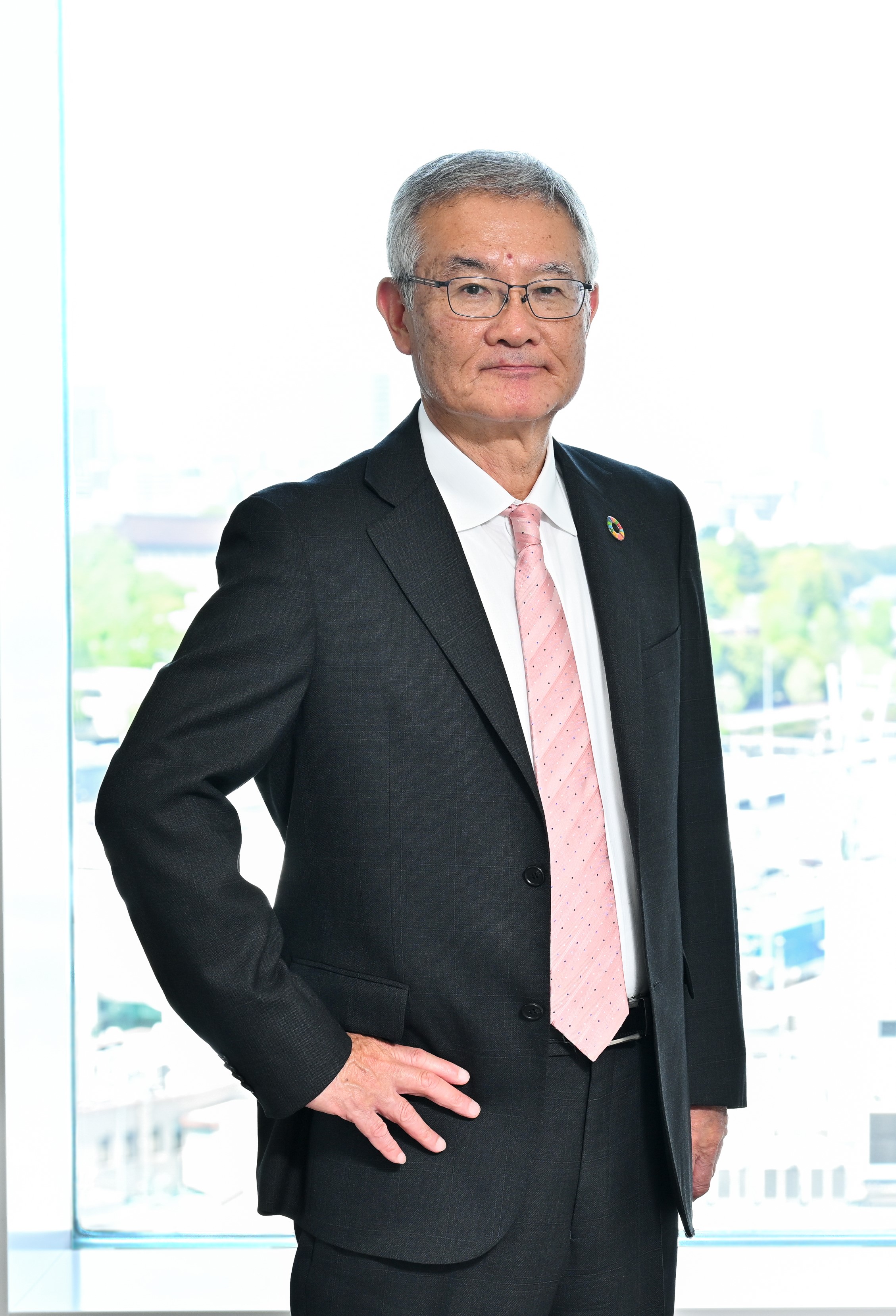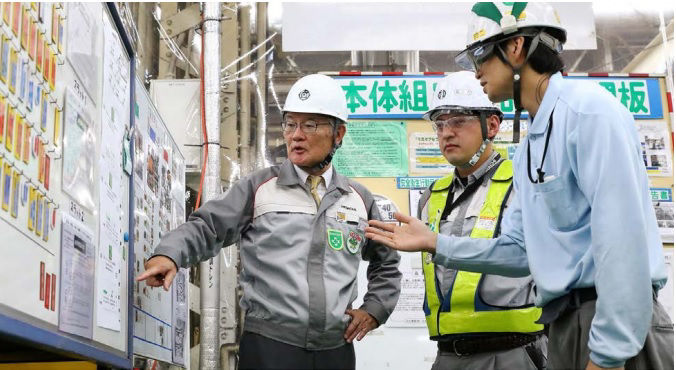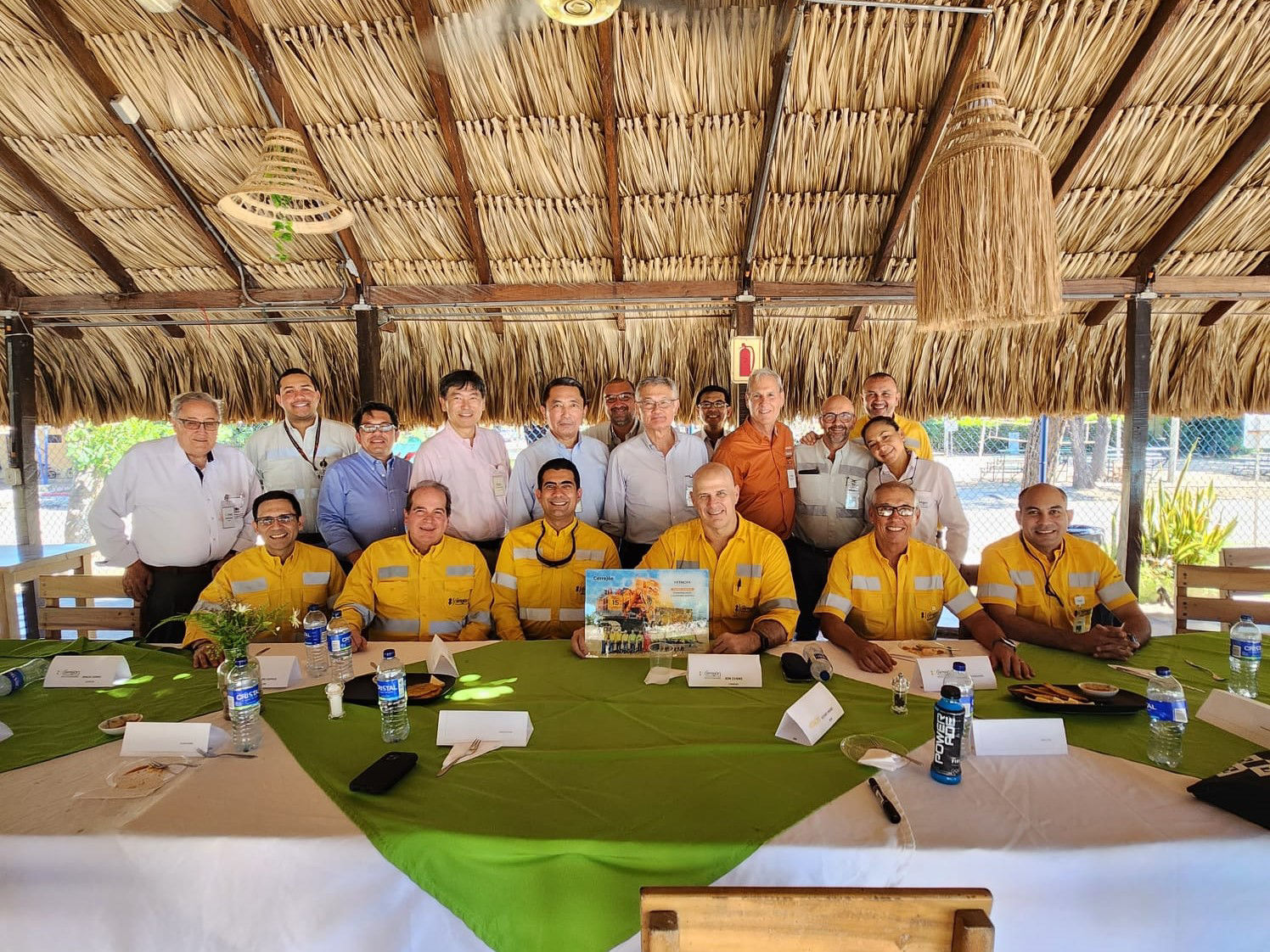CEO Message

We have achieved independent business development in the Americas and have changed our capital structure, providing new opportunities for further corporate growth. We aim to be a highly-rated business partner for our customers through the implementation of our Kenkijin Group Identity.
Representative Executive Officer, Chairman and Executive Officer, Director, CEO
Kotaro Hirano
The vision of the Hitachi Construction Machinery Group is “Ensure a prosperous land and society for the future; Contribute toward realizing a safe and sustainable society.” Although this sounds simple, we need to implement a range of measures to help us achieve this vision. We are a customer-oriented organization, considering our dealers as our customers as well, rather than a company-oriented organization. We know that by observing our customers’ sites where our machines operate, we can identify ways to improve how we run our businesses and find new challenges to take on. We strive to not only provide our customers with high-performance and high-quality machines but also to satisfy them as users of those machines. Our customers use our well-maintained machinery to build roads, sewage systems and other infrastructure that improves the quality of people’s lives. They also use our machines to contribute to recovery efforts when a disaster occurs. By supporting our customers, we are thus also working to “ensure a prosperous land and society for the future”.
The types of challenges faced by our customers, including those related to the environment, constantly evolve. We must be attentive and on the lookout for such changes and respond accordingly. Right now, this means seeking to increase the on-site efficiency of our machines, to extend their product life from 10 to 15 years while maintaining their performance level, and to recycle the components of machines that have come to the end of their 15-year life, in addition to making our machines even more environmentally friendly. In order to earn more trust from our customers, we must be more than just a mere manufacturer of machines.
The Hitachi Construction Machinery Group has achieved independent business development in the Americas and implemented the change in its capital structure, and these achievements are providing the Group with new opportunities for further global growth. To firmly grasp this opportunity, it is important that all our global employees are familiar with our “Reliable Solutions” Corporate Statement: “We are a reliable solutions partner with/for our customers.”
Whether or not we can achieve such global growth depends on the motivation of individual employees. We wish for all members of the Group to align themselves with our growth strategy of becoming a provider of innovative solutions by taking a customer-oriented approach. We will take on and meet this challenge to make Hitachi Construction Machinery an enterprise that customers rate highly as a valuable and productive business partner that is easy to work with.
Throughout Hitachi Construction Machinery’s history, there’s been chairman and president positions, but this is the first time we have had a structure with CEO and COO. We discussed in advance what roles we each would take on and clarified who would lead which meetings. As a function of CEO, I will work to make our Corporate Identity more widely known, formulate management plans, and enhance human resources development. I have only just embarked on these tasks and have yet to achieve results. I do indeed have a large in-tray of things to do.
For the Hitachi Construction Machinery Group to become something more to its customers than just a manufacturer of machines based on the Group Identity, I think the Group has things that it needs to change and things that it should not change going forward. And President Senzaki takes charge of the practical aspects of the required changes.
As for what should be changed, firstly, we need to increase the speed at which management is carried out. Due to the change in our capital structure, we have become independent from Hitachi, Ltd. Group, giving us greater leeway to manage more aspects of our business. For example, we used to consult our parent company about issues regarding investment, M&A and various other internal matters, which meant it took us a long time to make these kinds of decisions. We can now make a range of management decisions with greater speed, although we do need to make adjustments with our new shareholders to accommodate this. Ever since Mr. Senzaki became president of Hitachi Construction Machinery in FY2023, we have been working to promote reforms to make the company a provider of solutions needed by customers, and President Senzaki is now leading the reforms in his role as COO.
The second is responding to changes in customer awareness. In the traditional construction machinery and mining business, the mission of manufacturers like us was to simply supply products with excellent performance and quality. However, customer issues and needs are changing, and we are entering an era in which manufacturers can not only just supply products with excellent performance and quality, but rather also meet customer issues such as on-site safety, improved productivity, cost reductions such as fuel costs, asset optimization, and environmental friendliness to survive. Although our customers are steadfast in their commitment to increasing safety and productivity at their construction sites, there are other changes in their thinking that we must respond to also. To do so, we redefined our value chain business (parts and services, rental, used equipment and remanufacturing) in FY2017. Since then, we have been enhancing the business under our medium-term management plans and over the last six to seven years have focused on changing the mindset of our employees from one that values a business model driven by the sale of new equipment, to one that instead attributes importance to sales revenue from the value chain business. While enhancing our value chain business, we will increasingly be required to implement measures to contribute to making construction sites more environmentally friendly for the circular economy. Accordingly, we are attributing more importance to the number of equipment units operating in the market than to our market share calculated based on the number of new units sold only. This means providing reliable maintenance services for the roughly 300,000 working units that are currently in operation around the world to extend their product lives, thereby increasing their economic value. Also, to be highly rated by our customers, we need to help them meet their social obligations. Through independent business expansion in the Americas, we can now do this across the world, which I think is of great significance for us.
As for construction machine operators, there continues to be an ongoing shortage of labor. At the same time, technological addons such as self-driving and remote operation support systems can increase the machine’s complexities and costs. Some customers are expressing concern about the magnitude of investments that they need to make for the machines and also about their usability. Against this backdrop, customers are expecting us to support them in making efficient use of their assets (machines). It is expected that needs will become more diverse in the future. For example, as their needs diversify, some customers might be better served by renting or purchasing used equipment and we must be ready to make such proposals in order to equip them with a fleet that is suited to their purposes.
On the other hand, I regard it as one of my most important tasks to ensure one thing that should not change within our business. Specifically, I will work to ensure that all Hitachi Construction Machinery Group employees firmly uphold the vision of the Group, which is to “Ensure a prosperous land and society for the future” and is part of the Group Identity newly set in 2022. Our customers use our machines to build roads and lay water pipes to contribute to the development of local communities and the improvement of residential environments. If disaster strikes, these same machines will be needed to recover from the damage caused. We hope all our employees take pride in the fact that our machines make such contributions to society, and we want them to provide their customers with products and a value chain that can help our customers meet their challenges. This is what we mean when we talk about “Reliable Solutions.”
I think there is great importance to focus on building our Group Identity in the Americas, where we have recently expanded our market capabilities. In the Americas, our employee base has been increasing and diversifying at a rapid rate and we also have many new dealers for our products in the region. I therefore deem it important that we promote our Corporate Identity more widely with our local customers and dealers and not just among ourselves.



